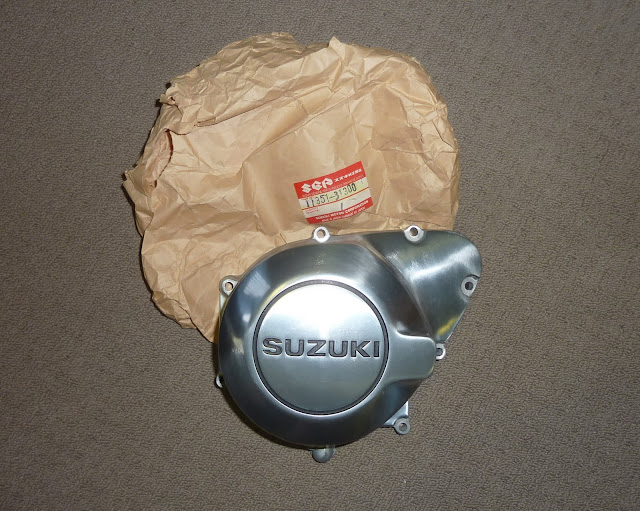Pod filters and open (ish) pipes.
It all leads to one thing, lean fuelling. It was all Dynojet kits when I was growing up. New pipes, or just a slip-on can? Needs up-jetting. And, although expensive when compared to buying a few jets, you knew your bike was going to run pretty well for the setup you had.
They did the testing for you to save you constantly removing a bank of carbs, swapping jets and then road testing it. That was enough of a selling point, and well worth the money, for most people.
Back to the point.
A little bit of searching online and I found 6Sigma racing jet kits for sale on eBay. Reasonable money, good feedback and they seemed to have a fair idea on what they were doing. Gotta be worth a shot so I put in a best offer, they accepted and the rest, as they say, is history.
Search: 11351-31300
Bought a project? Do yourself a favour and make a list of the items you'll definitely need to finish it off. Go to an online parts website and use their microfiche facility to work out the exact part numbers you need and, finally, save your search on eBay.
As the months go by, it's surprising what pops up for sale. I've now picked up a new stator cover for the GSX. That's both front crankcase covers sorted now which is going to finish the engine off nicely.
A big thanks to mcpartssales for packing and sending it so quickly. Great service and proof that those hard to find bits are still hidden away in shops everywhere. If you're looking for anything for your project, give Rod a shout at his eBay store. He's been in the bike trade for over thirty years and is absolutely passionate about finding the elusive bits we all need every now and again. Thanks again mate!
Improved Suspension Means Faster Bikes!
In a time when power and performance were paramount, the superbike manufacturers of the seventies and eighties were busying themselves with update after update. The big four Japanese factories continually pushing themselves to bring out the biggest and, perhaps more importantly, fastest bikes to sell to an eager public. The fact that the frames couldn't hold most of them in a straight line didn't matter, horsepower sold bikes. Besides, when you're in the pub claiming 80BHP at the back wheel over a few pints, the fact that you encountered death regularly really didn't matter (hell, it probably added to the bragging rights).
But as the engines continued to grow, somebody in Japan must have twigged that a bike that went in a straight line of its own accord, and round corners at the pilot's, might be a useful design brief. And it worked. Suspension improved, frames got stiffer, and gimmicky names and four-letter abbreviations began to take off!
1) Full Floater suspension - Suzuki's mono shock system.
2) TSCC - Twin Swirl Combustion Chambers (pretty cool huh?)
3) SADS - Suzuki Anti Dive System (or maybe just stick with sad)
All of the factories were at it, and all trying to outplay the other. I guess it kept them honest, and the punter was happy to benefit from the very latest in sports bike technology. And some of it was good; gear selection indicators must have been light years ahead at the time, and I'm glad to see Suzuki still using them (I wouldn't be without it now). But for every good idea, there came the oddities.
Consider, if you will, a device to prevent the forks from diving when applying the brakes. Imagine, suspension unflustered, steering geometry remaining a constant when cornering, what could possibly go wrong? Hmm, what about bumps in the road?
Unless a [relief] valve was incorporated in the forks, you were now riding with a rigid front end - until you released the brakes. Upon which the suspension would suddenly start moving again, affecting the entire bike's poise. Not really that good when you're committed to a bend. But, SADS does have such a valve incorporated, so maybe all is not lost.
The next aspect to think about is brake lever travel. Single piston, floating calipers have one major drawback. Once the piston has moved its brake pad into contact with one side of the disc, the caliper itself must slide to enable the other brake pad to do the same. Although the movement should only be slight, it does increase lever travel. Factor in the anti-dive mechanism and it's going to be hard to get good feel from the lever. Maybe a late Gixer master cylinder will help...
Anyway, without further ado, we have the anti-dive modulators themselves. Here's how it's ripped apart, cleaned up and put back together.


